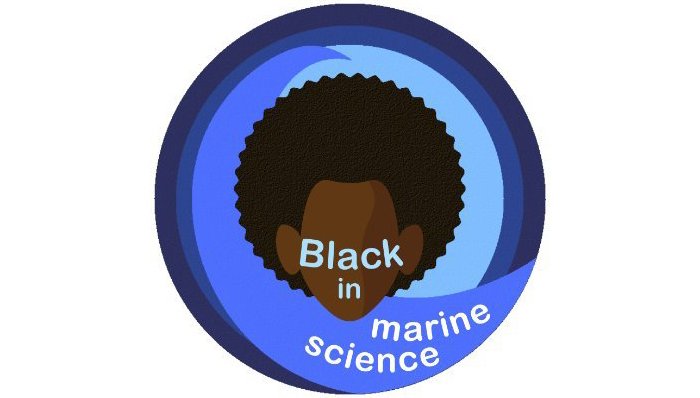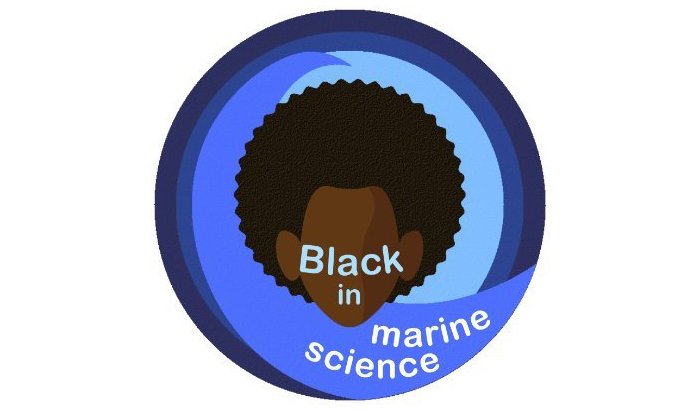Group Aims to Make Field More Diverse, Provide Guidance for Young Practitioners
It started with a tweet. Tiara Moore, a postdoctoral scholar at the University of Washington, had been following the variety of “Black In” science weeks that were launched after the harassment of a Black bird-watcher inspired #BlackBirdersWeek. She wondered whether her Twitter followers would be interested in one more: #BlackinMarineScience.

The response was emphatic. Within days of that August 2020 tweet, Moore and a newly formed team were on their way to organizing a Black in Marine Science Week of webinars that celebrated and promoted the careers of scientists from around the country. It was so successful – not only in terms of attendees but sponsors -- that the group formed a full-fledged nonprofit organization dedicated to ensuring more Black students enter the field and removing the professional barriers that confronted previous generations.
At Black in Marine Science’s (BIMS) core are three women with roots in the Mid-Atlantic region and longtime ties to each other and Moore dating back to their days as students at Hampton University in Virginia. They are Chief Learning Officer Symone Barkley, an environmental educator at the National Aquarium in Baltimore; Chief Innovation Officer Dr. Jeanette Davis, a children’s book author and marine environmental DNA (eDNA) researcher at the National Oceanic and Atmospheric Administration (NOAA) in Maryland; and Chief Financial Officer Dr. Camille Gaynus, a postdoctoral researcher at the University of Pennsylvania in Philadelphia.
Recalling her early discussions with Moore about launching BIMS and getting involved, Gaynus said the decision was “an easy yes.” She believed strongly in the importance of what BIMS was about to do.
“I think we downplay how hard it can be to be the only minority in a certain space,” Gaynus said. “There are universities where you have one, maybe two people of color in a graduate program or in a lab space or postdoctoral position. We wanted to be, first and foremost, a support system. I want them to see there is a network for you, there are people you can reach out to who can help you reach those next steps.”
It's a role in which BIMS is increasingly striving to fill. For example, Gaynus noted that the group is contacted regularly with job listings, funding opportunities, and inquiries from outside organizations interested in improving the diversity of their staffs, all of which can be shared within the BIMS network.
The social media presence that initially drew BIMS attention has also been ramped up. The group now produces three regular video series highlighting the work of Black marine scientists – short profiles called #BIMSBites, educational pieces for youths called #BIMSBitesKids, and #BIMSDives, which take a deeper look at special topics.
“We didn’t want it to be limited to tweets and hashtags,” Davis said. “We really started thinking critically about what was needed. What do we want people to know? What will uplift and celebrate us?”
BIMS is now looking to the future and considering how else it can serve its audience. Black in Marine Science Week is here to stay, and could grow into an annual in-person conference when the COVID-19 pandemic subsides. The group is also pursuing new partnerships with schools in disadvantaged communities that would enrich students’ classroom experiences and make them aware that marine science is a career they can pursue.
“I want those students who maybe don’t get opportunities to go to their local aquarium or zoo, or the bay or the ocean, to know that they can still be exposed to this work,” Barkley said. “Being a marine scientist doesn’t necessarily mean that you have to be on a boat all of the time, and it’s good to let them know that. There’s also diversity in the field in terms of what your job is.”
Scroll below to learn more about the personal and professional journeys of Barkley, Davis and Gaynus as marine scientists.
Symone Barkley
As a graduate student at Delaware State, she studied the vulnerability of sand tiger sharks, a species that possesses a gulp-feeding mechanism which makes them more likely to be hooked internally – a mortal threat even if they’re released or break free from the line. The team surveyed recreational anglers in Delaware to learn more about the gear they use, how much they know about state fishing regulations, and how well they can identify various shark species. They experimented with the use of a piece of PVC on the line that made it difficult for the sharks to swallow the hook whole and found it to be effective.
“All shark species have low reproductive rates, but sand tigers are especially low,” Barkley said. “Any additional sources of mortality or injury are really significant, so we want to minimize those as much as we can. Adding that piece of PVC prevents them from being hooked internally.”
The map above indicates the concentrations of highly migratory species such as sharks, swordfish and tuna along our coast. Users can click any point on our interactive map for a pop-up listing which of these fish are known to roam in the vicinity. It shows sand tigers to be abundant along the Mid-Atlantic coast and around the mouth of the Delaware Bay.
Dr. Jeanette Davis
The Wilmington, Delaware, native is also the author of a children’s book, “Science is Everywhere, Science is for Everyone,” which explores how science is ever-present in our daily lives. Davis said the idea to write the book came after she had trouble finding books that could answer her nieces’ and nephews’ questions about science that featured any people of color. She set out to produce works that would rectify that.
“I want to create literature to connect young people with science, so they can have the language to say, ‘I want to be a zoologist,’ or know that when they’re baking, that’s chemistry,” Davis said. “Allowing them to see the things in nature they love is science, but also with the component of having people of color, so everyone can see themselves in science.”
Dr. Camille Gaynus
Her research work at Penn is focused on the health of reefs and algal communities that live within them. She began studying the subject as a graduate student at UCLA and was soon presented with an opportunity to join a team researching the reefs that ring the island of Mo’orea, located west of Tahiti in the South Pacific. The reefs are visible as a halo around Mo’orea in the satellite view above.
“Reefs are so important,” she said. “There’s estimates that one-third of fish in the ocean spend a portion of their life in a reef, so if you have reefs that aren’t doing well, you could have a collapse of fisheries globally.”
Beyond serving as critical habitats, Gaynus noted that reefs are instrumental for coastal resilience and economic stability, as they support industries such as eco-tourism. They are also under threat from a wide range of human impacts that are upsetting the balance of algal populations living within them.
“My question is now, how are changes that we know are happening, due to overfishing, due to changes in nutrient regimes, affecting the diversity of algae in reefs?” she said.
At Mo’orea, scientists have been recording a trove of data since 2005 for parameters including daily meteorological conditions, water temperatures, nutrient levels in the ocean and much more, Gaynus said. This provides the researchers with the advantage of understanding what the baseline conditions are when the reef communities are healthy, so when there’s a sudden change, they can better pinpoint the factors that are driving it.
While Gaynus was on the island, the reefs went through a bleaching event that killed off the corals and exposed the hard substrate they live in. She collected samples of the branches and is now conducting analysis in her Philadelphia lab to determine what was living in them and how they may have been impacted by nutrients in the waters or other factors. She is also comparing the bleached sections of reef to unbleached areas around the island to see how the microbial communities living in them are different.
“Hard substrate in a reef is a hot commodity – it gets taken up quickly,” she said. “There’s not a lot of it, so when you have corals dying, [marine organisms] have an opportunity. Typically algae is the first thing to colonize it.”
Story by: Karl Vilacoba, Monmouth University Urban Coast Institute. He can be reached at kvilacob@monmouth.edu.


